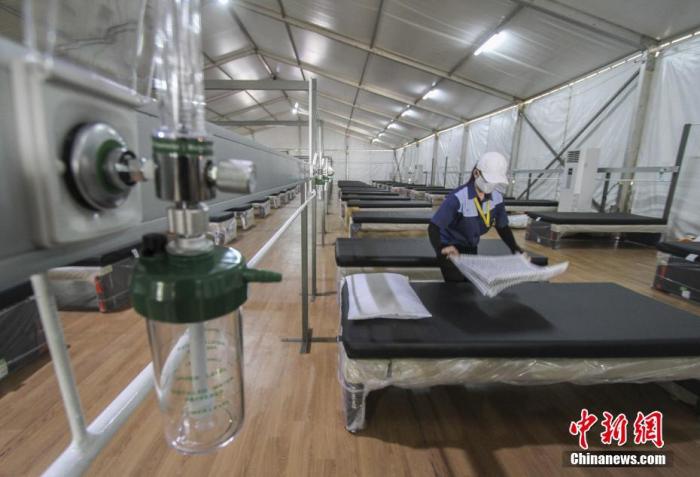China News Service, August 8th. According to Singapore’s Lianhe Zaobao report on the 8th, due to the slow progress of the new crown vaccination work, the delta strain is spreading rapidly, and the epidemic in many Asian countries has rebounded and the lockdown measures have to be re-implemented.
According to reports, due to the low mortality rate of the new crown, South Korea, Japan, Australia and New Zealand lag behind other countries in vaccination.
Its vaccination rate is now the bottom 10 in the Organization for Economic Cooperation and Development (OECD), which has 38 member states.
Singapore may become the first Southeast Asian country to control the epidemic and gradually transition to the "post-epidemic new normal" coexisting with the new crown virus.
Data map: During Australia's lockdown, a supermarket shelf was empty.
Image source: Visual China
At the same time, several Asia-Pacific countries were attacked by the Delta strain.
Take South Korea, Japan, and Australia as examples. In the past month, the number of people infected with the new crown virus has increased by multiples. Among them, South Korea has increased by about three times, Japan has increased by four times, and Australia has increased by more than 600%.
In Australia, the epidemic situation in Sydney and Melbourne, which are populous cities, continues to deteriorate. New cases have reached the highest record since the outbreak of a new round of epidemics, and they have to be repeatedly unblocked and blocked.
As for Japan, where the Olympics are being held, although the new crown virus has not spread among most vaccinated athletes, cases of Delta infection have surged in the local population outside the Olympic Village.
Only about 14% of South Korea's population has completed the full dose vaccination.
Like other countries such as Australia, South Korea has imposed blockade measures and banned gatherings of people, severely hitting economic activities.
The report pointed out that the continued deterioration of the epidemic situation in the Asia-Pacific region will affect economic growth prospects.
Especially in Southeast Asia, the weekly mortality rate has repeatedly climbed, surpassing Latin America.
On July 29, 2021, local time, Jakarta, Indonesia, due to the surge in patients with new coronary pneumonia, the Indonesian government plans to open an "oxygen room" equipped with medical facilities to provide treatment for patients with moderate symptoms.
The facility is scheduled to be put into use in early August.
Image source: Visual China
In Indonesia, where the epidemic is severe, the cumulative number of deaths as of this week has exceeded 100,000.
However, the country has not implemented a comprehensive blockade, so as not to affect the livelihood of the people and further hit the prospects of the largest economy in Southeast Asia.
Other countries in Southeast Asia, such as Thailand and Vietnam, are also "arguing" about whether to blockade them completely, because strict blockade measures will severely hit the trade activities that the country's economy is highly dependent on.
The Federation of Thai Industry also recently warned that measures such as isolation and movement restrictions have caused labor shortages and forced companies to reduce production.
According to the report, at present, the Southeast Asian country that is most likely to take the lead in controlling the epidemic and gradually transition to the "post-epidemic new normal" coexisting with the new crown virus is Singapore.
According to Herrero, chief economist for the Asia-Pacific region of Natixis, "We estimate based on the current vaccine level, vaccine supply and coverage rate, Singapore will be the first to reach the threshold of 80% (the population is vaccinated)."

